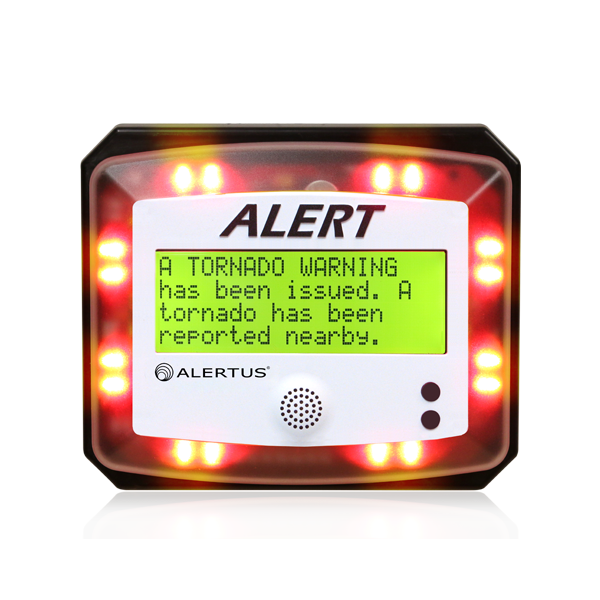Overview
Location: Weston, CT
Size: 117 acres
Students: 2100
Staff: 350
Weston Public Schools consists of four schools, athletic fields, and a central office, all situated along one road, adjacent to the Weston Fire Department, EMS Headquarters, and Police Department. In 2017, driven by a commitment to student and staff safety in response to the rise in school shootings across the U.S., Weston Public Schools began exploring the implementation of a robust mass notification system. The goal was to empower teachers and staff with the ability to request assistance promptly whenever needed.
Solution
The wall-mounted Alertus Alert Beacon® sounds, flashes, and displays an alert message in the event of an emergency.
Dan DiVito, Director of Digital Learning and Technology at Weston Public Schools, working closely with the district’s director of security, prioritized creating the safest and most secure environment possible for students and staff. To achieve this, they implemented a comprehensive security strategy that includes security cameras, an Alert Beacon® in the local police dispatch center, a visitor management system, Alertus Desktop™, the Alertus Desktop Activator, and the Activator App for administrators. They also have a school resource officer (SRO) and a safety officer who can provide instant assistance during emergencies.
Expanding safety with the wifi panic button
The Alertus WiFi Panic Button allows users to quickly, instantly, and remotely request help and share location information.
The district observed that other schools had successfully improved response times from authorities by using panic buttons. Consequently, Weston Public Schools decided to further enhance its emergency capabilities by integrating Alertus’ WiFi Panic Buttons. Since teachers and staff are not always at their desks, they found these buttons particularly beneficial, as they can be conveniently attached to a lanyard and easily pressed to initiate lockdowns. This action instantly transmits information to the Alert Beacon in the police dispatch center, ensuring a swift and coordinated response to any emergency.
The primary objective was to ensure quick and easy notification distribution, making the simplicity of the WiFi Panic Buttons a key advantage. “Hopefully, we will never need to push the button,” said DiVito. “But in the event of an emergency, teachers and staff are trained to know that all they need to do is push it, and the building will go into lockdown, and all other buildings are notified, ultimately reducing lag time between an incident and a notification to the police department.”
The panic buttons are configured to operate using service set identifiers (SSID) to gather location-specific information. This allows the system to identify the wireless access point the button is connected to. In an emergency, the building where the panic button is pressed immediately goes into lockdown, while the other schools in the district and the central office enter secure school modes.
The WiFi Panic Button shares location and user information to facilitate swift response.
Currently, the district is in Phase I of testing, having distributed 150 panic buttons for teachers to carry. This phase aims to assess the wireless infrastructure. By implementing a phased rollout, the district has been able to identify areas where additional access points are necessary.
DiVito emphasized the importance of the built-in fail-safes of the WiFi Panic Buttons, as their primary concern is the possibility of accidentally pressing the button and triggering a false alarm. Staff members feel more at ease once they understand that the button must be physically switched open and held down to activate it.
DiVito also highlighted the cost-effectiveness of the WiFi Panic Buttons. “The ease of use of the Alertus System is really important for all staff members,” said DiVito. “The backend of mass notification systems can be complicated, but our administrators use Alertus for drills several times a year, and everyone can figure out how to use the system relatively quickly. I’d also like to acknowledge the fantastic support team at Alertus, as they are always readily available to help and answer our questions.”





